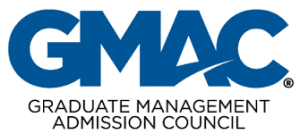The GMAT is Getting Shorter

If you’re planning to sit for the GMAT exam in preparation for applying to business school, you might do well to hold off for a couple of weeks. According to the Graduate Management Admission Council (GMAC), which owns and administers the GMAT, the test will be 30 minutes shorter than it has been in the past, lasting just 3.5 hours instead of the previous 4, including breaks and instructions.
But before you get too excited, we should stress that this does not mean the test will be any easier. GMAC sliced 23 minutes out of the exam sections themselves by including fewer unscored (research) questions in the Quantitative and Verbal Reasoning sections. To further cut down on time, the non-exam screens—tutorials and instructions—were also streamlined.
| Old Structure (Before April 16) | New Structure (After April 16) | |||
|---|---|---|---|---|
| Number of Questions | Section Time | Number of Questions | Section Time | |
| Quantitative Reasoning | 39 | 75 minutes | 31 | 62 minutes |
| Verbal Reasoning | 41 | 75 minutes | 36 | 65 minutes |
No Impact on Scores
The proposed changes will not impact GMAT exam scoring at all since the number of scored questions remains unchanged. Therefore, the Total Score and individual Quant and Verbal section scores from someone who sat for the test prior to April 16, 2018, will be directly comparable to anyone who sits for the new shorter exam. Exam content, question types, and average time per question will remain the same. “It’s the same GMAT exam—just shorter by a half hour,” reads the GMAC website.
So Why Make the Changes?
Believe it or not, GMAC does not want the GMAT to be the most dreaded part of the MBA application process. “We are always looking for ways to help candidates build confidence and control, reduce anxiety, and streamline the test center experience in a way that continues to maintain the high quality and integrity of the GMAT exam,” read an answer on an FAQ page about the new shorter exam.
GMAC reports that operational reviews of its systems and technology changes helped identify a way to shorten the test without impacting the way it is scored. “We also received feedback from test-takers that they felt rushed through the tutorial screens at the test center prior to starting their GMAT exam, and so we reviewed and simplified much of the content on several non-exam screens, and have made the tutorial available in advance,” GMAC added.
“By shortening the two longer sections of the GMAT, combined with the availability of the tutorial information online, we want to create a better and friendlier testing experience that enables all GMAT test-takers to do their personal best on test day.”
Online Tutorial Now Available for Viewing in Advance, at Test-Takers Leisure
The online tutorial will be available via mba.com. GMAC will also include a link to the tutorial in the reminder emails it sends leading up to your scheduled exam.

The tutorial will introduce the general layout of important test screens, including navigation, different question types, and how to track your progress. It will also provide general information about exam questions, break times, and test center rules, as well as in-depth descriptions of each exam section and question type. Finally, it will review choices test-takers face with regard to sending scores to schools, selecting your section order, and decided to accept or cancel your score.
Watching the online tutorial in advance of taking the GMAT is not required, but GMAC does strongly recommend it. “While anyone can access the tutorial at any time, we recommend that you review the tutorial content at least one time within 3 days of your exam day, so the information is fresh in your mind,” reads the FAQ page.
Should You Reschedule Your Exam to Take Either the Shorter or Longer Version?
From April 16 on, all GMAT exams will be delivered in the new shortened format. But if you already have an exam scheduled between now and May 6, 2018, you can call GMAC Customer Service and choose to reschedule it, opting to push it forward, to take the longer exam, or back, to take the new shorter exam.
Both the reschedule fee (depends on early or late reschedule) and phone fee ($10) will be waived provided your request is received on or before April 11 and your exam is scheduled on or before May 6th. To take advantage of this offer, you must indicate when you call that you are rescheduling as a result of the new shorter test. There is a limit of one free reschedule per candidate.
This article has been edited and republished with permissions from our sister site, Clear Admit.
Real Humans of the NYU Stern MBA Class of 2019

Clear Admit recently profiled many of the standout students from the NYU Stern MBA Class of 2019, which you can read below.
New York University’s Stern School of Business got the party started this summer as the first leading business school to share a profile for its incoming Class of 2019. That profile, published in late July, revealed a 4 percent uptick in application volume over the prior year. At the same time, the school admitted significantly fewer students—822 this year as compared to 871 last year—which means that those who got in did so against greater odds.

This increased selectivity may have contributed to the rising GMAT scores among those who got the nod. Both average and median GMAT scores increased year over year. The average GMAT score jumped six points, from 710 to 714. The median score increased even more significantly, from 710 to 720. Average GPA, though, slipped slightly, from 3.51 to 3.48.
As the school’s admissions process grew more selective, the enrolled class grew more diverse. The incoming class is 38 percent female, up from 35 percent the prior year. International students also increased to represent 37 percent of the Class of 2019, up from 35 percent in the Class of 2018.
In terms of the work experience they bring with them, more members of the Class of 2019 come from the financial services industry (29 percent) than any other. Another 12 percent of the class came from consulting. Students with government/non-profit, tech, and military backgrounds followed, at 7 percent each.
While some of these statistics hint at both the diversity and the high caliber of the incoming class, nothing brings that to life more than a look at some of the real students who enrolled. We spoke with five of them—drawn from Massachusetts, Texas, Michigan, India, and Lebanon respectively—to learn more about why they chose Stern, how they hope the Stern MBA will help them transform their careers, what advice they would offer to applicants navigating the admissions process right now, and more.
Perhaps not surprising, NYU Stern’s New York City location factored highly into the decision-making process for many of the students we asked. But so too did its community—including how approachable and friendly current students were to prospective students and the school-wide emphasis on IQ + EQ (emotional quotient)—and its curriculum, which has a strong core but also gives students the opportunity to explore electives early on and offers specializations in things like luxury marketing and technology. The reach of its alumni base was also a factor cited by several of the students we spoke with.
Read on to learn more about some standout members of the NYU Stern MBA Class of 2019.
How To Save Valuable GMAT Time

MetroMBA’s sister site Clear Admit recently offered up some essential tips about how to get an MBA, specifically when it comes to saving valuable GMAT time, which you can read below.
When working through GMAT Quantitative problems, at times some students will comment, “well, I solved this problem this way, so that’s fine right???”
Totally. As we’ve covered in quite a few posts, there are always several different ways to get to the correct answer for a problem solving or data sufficiency question. However, there are ways that are more efficient than others, and it’s all about what you do “inside” your work on the problem that makes a difference.
Reality: the GMAT is a timed test. With oodles of time, it’s likely that a lot of us could get to the right answer. But the GMAT expects that you complete quantitative questions without a couple minutes, on average. This means that each question CAN be done within that time frame, but it’s more likely that a savvy, high-scoring test taker will average out to two minutes a problem.
There are quite a few problems, particularly in the 500 range, that can be completed in just a spare few seconds if you understand the core concept being tested. There are others that require a few calculations, but once you see the pattern or where a problem is moving, the right answer becomes apparent. And, lastly, there are questions in this space that are best accomplished working backwards from the answer choices, because those answers choices show us where to get started.
Completing these questions as quickly as possible is essential to “saving up seconds” for higher order thinking questions.
But, once we get to the more complex questions, where we save time is all on a) recognizing when we’ve taken the wrong path and need to circle back and/or b) having efficient scratch work.
Many students are so used to “showing the work” that they waste time in scratch work writing out steps they already understand or manually doing calculations in their heads, on their fingers, or simply, more efficiently. Saving seconds allows us to apply time where it is needed (setting up the problem, double-checking the right answer) supporting a high score.
Over the next few posts we’ll highlight questions that fall into this category. In the meantime, as you approach your quantitative practice, think – where can I shave seconds?
Stay tuned to MetroMBA and Clear Admit for more valuable advice about admissions, GMAT tips, and more.
No GMAT, No Problem: How These Schools Help MBA Applicants

There’s little joy in agonizing over less-than-stellar GMAT scores, wringing your sweaty hands over a looming GMAT appointment, and/or simply trying to sidestep the standardized nightmare, full stop. Slow down! Go easy on yourself!
For starters, there are plenty of schools that offer GMAT/GRE waivers or weigh other parts of your application more heavily than what you were able to half-remember one random Saturday morning.
Many schools acquiesce that it’s difficult parse out the ideal applicant from a test score and they eliminate many worthwhile candidates in the process. So, are there students who might do just fine in the application process skipping the GMAT rigmarole altogether?
If you have 5-7 years of high-quality work experience, it will certainly carry a lot of weight for applicants without GMAT scores, as will exceptionally high undergraduate GPAs. Applicants who can demonstrate aptitude in a related field can likely get away without GMATs. Candidates with post-graduate degrees in an unrelated field can also have the GMAT waived—let us know your secret for avoiding standardized tests all across the board, by the way.
On the flip side, if you don’t have significant work experience, didn’t graduate cum laude, and can’t demonstrated related (or unrelated) aptitude, you may have to claw tooth and nail to pass that GMAT with flying colors.
For those applicants with the right stuff, let’s take a deeper dive into five Metro-covered schools that don’t require GMAT for admissions:
Suffolk’s Sawyer School of Business
Sawyer School of Business applicants sans GMAT need not fret. Full-time MBA candidates with three years’ work experience and part-time MBA candidates with 5-7 years of experience can apply for waivers. Here are the other potential credentials that can take the place of a GMAT. In all cases documentation is required:
- If you’ve passed the CPA; CFA, Level 1; or the FRM, Level 1 exams
- If you’re a second-semester senior business or economics major or Berklee College of Music music management undergrad with a cumulative GPA of 3.3.
- If you have 2 years of relevant full-time professional work experience and a 3.4 undergraduate GPA; a 3.3 GPA and four years of experience; or 3.2 and six years of experience.
- If you have a MSA, MSF, MSBA, or MST from an AACSB-accredited b-school.
- If you are an ABA-approved law school graduate.
- If you’ve completed any SBS graduate certificate programs with a cumulative 3.3 GPA.
DePaul’s Kellstadt School of Business
If you apply to the Kellstadt School of Business in Chicago without GMAT scores, here are some alternatives that will help you make the cut. Along with an undergraduate degree from an accredited institution, Kellstadt applicants that do not take the GMAT need:
- Five years’ consecutive work experience that demonstrates management and quantitative aptitude.
- JD, MD, Ph.D., MSF degrees.
- 160 LSAT Score.
- Pass the CPA and/or PE exams.
- Any alumni from DePaul’s Driehaus College of Business with 3.2 GPA or higher and two years’ work experience.
YOU MIGHT ALSO LIKE: Social Media Do’s and Don’ts MBAs Need To Know
Rutgers Business School
Holders of a Ph.D., MD, JD, and PharmD, as well as applicants with 3.0-plus undergraduate GPAs are not required to present GMAT scores. Rutgers Business School part-time MBA and Professional Accounting MBA applicants with 10 years’ full-time experience (or 8 if they have a Master’s degree) can apply for GMAT waivers. Other related degree paths that do not require GMAT or GRE scores: The MA in Taxation, the MA in Governmental Accounting, and the MS in Supply Chain.
Pace’s Lubin School of Business
Prospective Pace Lubin School of Business MBAs with a 3.50-plus cumulative undergraduate GPAs or those already in possession of business-related post-graduate degrees can request GMAT waivers. CPAs, CMAs, or practicing lawyers can request GMAT waivers if they apply for the MS in Taxation. Applicants with three years of managerial human resources experience can request GMAT waivers for the MS in Human Resources Management.
Golden Gate University’s Ageno School of Business
The following Ageno School of Business candidates may apply for a GMAT waiver:
- Master’s degrees in unrelated fields.
- Applicants with professional licenses earned by passing a nationally recognized US exam e.g. CPA, CMA, CIA.
- Applicants with cumulative 3.50-plus undergraduate GPAs.
- Applicants with five years’ managerial experience.
- Practicing CFAs, physicians, or attorneys
What are the Most Common Business School Application Mistakes?

Nobody just strolls into business school and starts taking classes. Prospective MBAs must undergo a rigorous application and admission process before beginning coursework and earning credits toward an graduate degree. Continue reading…
Been Waitlisted? Here’s What to Do (And Not Do)

There’s an art to the waitlist, and it can be mastered.
Remember, you’ve probably been waitlisted for a reason. For one, you’re qualified. Otherwise, you would have received a denial. Unfortunately for you, other candidates had a bit more of an edge. Maybe their GMAT scores or GPA was higher. However, your dream school might not be theirs, so there’s always that chance that enough applicants will deny the offer, and the school will, in turn, offer a place to you.
The waitlist can also serve as a sort of test for applicants the school isn’t 100 percent sure about. Here are a few simple tips to help you put your best foot forward while on the waitlist and show your dream school that it needs you just as much as you need it.
Follow Instructions
Schools are pretty clear about how they want you to respond to their notice. If they ask that you not send a letter, then don’t—no matter how much your heart aches to. If they ask for another letter of recommendation, send one as soon as possible. It’d be even more effective if a former colleague or mentor who attends/attended the school or works at it write the letter (assuming they know you personally). Don’t hesitate to do whatever the school asks from you, especially if it is your first choice. That’s the kind of attitude that may lead you where you want to go. But don’t do too much if the school doesn’t ask for it.
Last year, Clear Admit wrote about this dilemma, saying, “ignoring the adcom’s instructions is ultimately going to reflect badly on you. Though policies discouraging communication from waitlisted candidates may seem frustrating or unfair, it’s important to respect and abide by the preferences of each school.”
Clarify Your Intentions
If you plan to wait it out, it may be important to let the school know. If the school is your first choice, let your contact there know as well. Whatever it is that you plan to do next, inform the school. You must do all this, of course, without appearing too cloying and without disregarding whatever instructions the school provided in the waitlist notice. If schools know, however, that you’ll definitely accept their offer, there’s a better chance they’ll offer it to you than that waitlist applicant from whom they never heard back. They also want to know how interested you are, so keep in touch.
“There are candidates who are offered a place on the waitlist and then we never hear from them again. And there’s candidates who don’t overwhelm us with contact but at least stay in touch and help us remember them,” said James Holmen, Director of Admissions and Financial aid at Indiana University—Bloomington’s Kelley School of Business, to U.S. News.
Retake GMAT
Even if a school doesn’t ask this from you, it still might be a good idea to retake the GMAT. Some of the most common gaps in applications include a low GMAT score and GPA. If a school doesn’t accept you the first time around, chances are it had something to do with one of those factors. And your GMAT score, at least, you can change. Unless you scored an 800. Then, you’re a genius, and something is really wrong with the school to which you applied.
Really, though, any time something changes in your application, feel free to inform the school, which includes updated GMAT scores. But if you receive a promotion or a job change, that’s something worth telling them too.
Consider Plan B
This really is a personal decision. Are you in a rush to get that MBA? If so, then it might be a better idea to hop on it as soon as you can and forget that waitlist. You’ve likely been accepted into a number of other MBA programs. But have you been waitlisted at your dream school? Is it one of the best in the world? Well, then, it might be worth waiting it out because you have a chance. If they don’t go with you this time, you can increase your chances next round by doing some of the tips laid out above.
“If you’re wait-listed, it means you’re a great candidate,” U.S. News reported. “You can apply next year. So, honestly, a year plus or minus doesn’t change things.”
Good luck, and chill out. Everything will turn out for the best in the end.
